Plano, TX Pollen and Allergy Report for Summer 2023
Pollen Allergy Trends in Plano, TX
When is pollen lowest in Plano, TX?

February
Lowest month total PPM
Avg. PPM
When is pollen highest in Plano, TX?

March
Highest month total PPM
Avg. PPM
How does pollen in Plano, TX compare to Texas?
Plano has a higher average PPM than the state of Texas.
Plano yearly avg PPM:
Texas yearly avg PPM:
How does pollen in Plano, TX compare to the USA?
Plano has a higher average PPM than the USA.
Plano yearly avg PPM:
USA yearly avg PPM:
Is pollen worse this year in Plano, TX?
Spring 2023 was worse than spring 2022.
Spring 2023 PPM:
Spring 2022 PPM:
Average PPM in Plano, TX
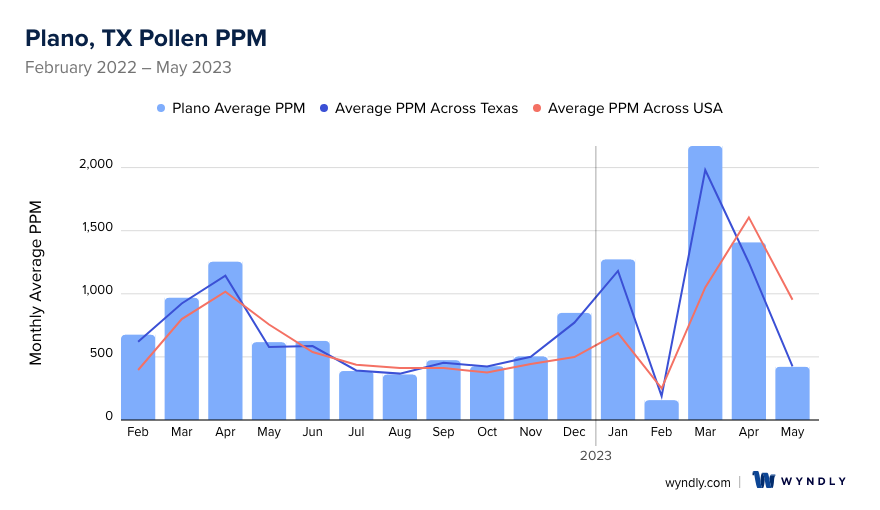
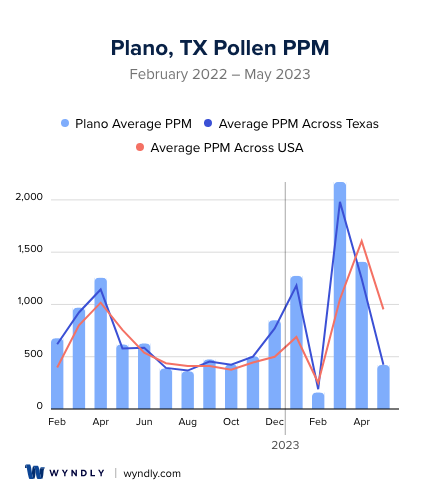
Plano, TX Pollen and Allergy Breakdown by Month
Grass
When is grass pollen highest in Plano, TX?
February has the highest grass pollen in Plano, TX with an average PPM of
When is grass pollen lowest in Plano, TX?
December has the lowest grass pollen in Plano, TX with an average PPM of
Tree
When is tree pollen highest in Plano, TX?
March has the highest tree pollen in Plano, TX with an average PPM of
When is tree pollen lowest in Plano, TX?
July has the lowest tree pollen in Plano, TX with an average PPM of
Weed
When is weed pollen highest in Plano, TX?
December has the highest weed pollen in Plano, TX with an average PPM of
When is weed pollen lowest in Plano, TX?
February has the lowest weed pollen in Plano, TX with an average PPM of
Plano, TX Pollen Monthly Breakdown by Pollen Type
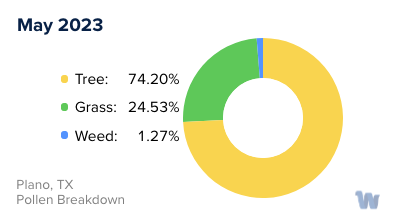
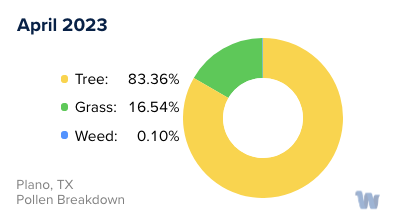
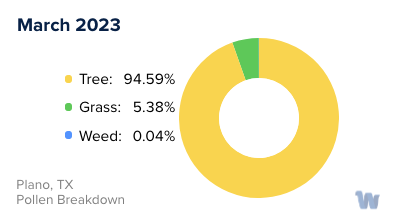
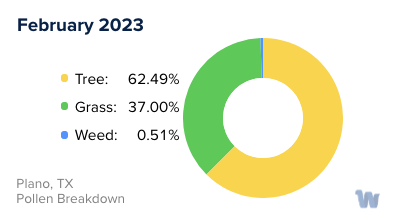
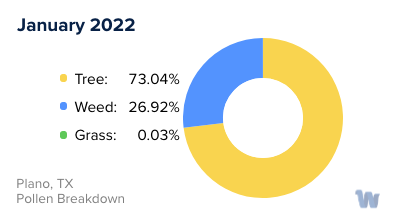
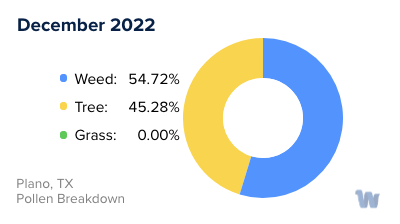
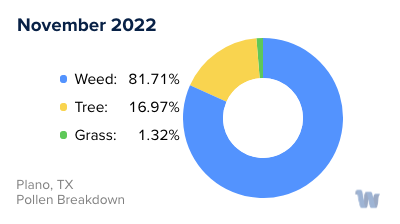
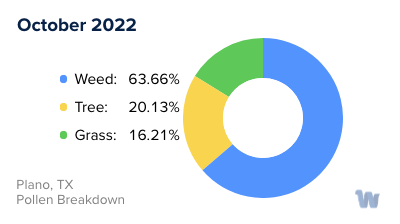
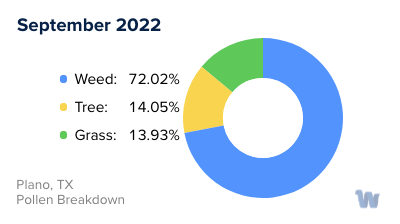
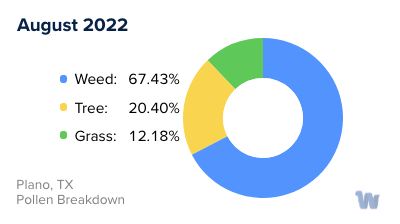
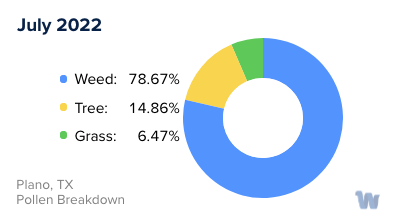
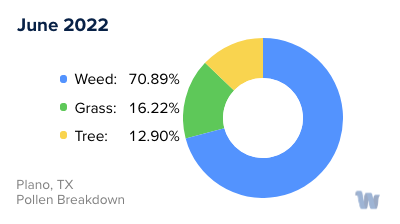
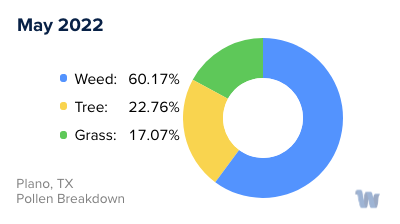
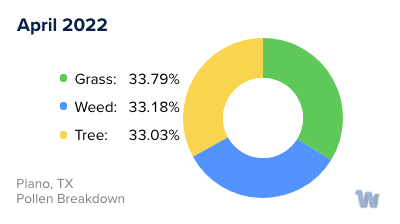
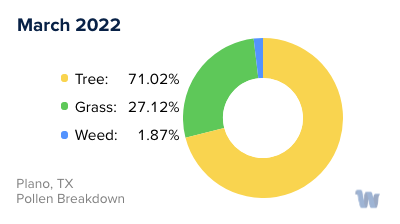
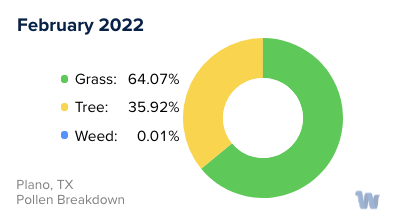
Pollen and Hay Fever in Plano, TX
For those who call Plano, Texas home, the joys of living in this vibrant city are sometimes challenged by a common nuisance - pollen allergies, also known as hay fever. This type of allergy is your body's response to airborne substances like pollen. In Plano, we are in a unique position as our city is in the pathway of several different types of pollen, each contributing to the various allergy seasons we experience annually.
In the early spring, typically between February and April, tree pollen is the main culprit. The most common trees in Plano that release pollen include oak, ash, pine, and cedar. These trees produce small, light, dry pollen grains that are easily transported by wind. If you find your eyes watering and your nose running during these months, you might just be reacting to tree pollen.
As spring transitions into summer, usually around May, we see a shift in the types of pollen in the air. Grass pollen takes center stage during this time. Bermuda grass and ryegrass are prominent in Plano and they release their pollen into the air, causing hay fever symptoms for many residents.
Finally, the fall season, around late August to October, is marked by the release of weed pollen. The most common types of weeds in Plano that cause allergies include ragweed, sagebrush, and lamb’s quarters. These plants release copious amounts of pollen which can cause a significant spike in hay fever symptoms.
The timing and severity of pollen allergies can vary from year to year, depending on weather conditions. Dry, windy days are more likely to have increased pollen counts compared to rainy days. Furthermore, climate and geographical factors unique to Plano, such as its relatively flat terrain and warm, humid climate, can influence pollen distribution and levels.
Understanding the patterns of pollen in Plano can be helpful in anticipating and managing hay fever symptoms. While pollen allergies are a part of life for many in our city, they don't have to define your experience of the changing seasons.

